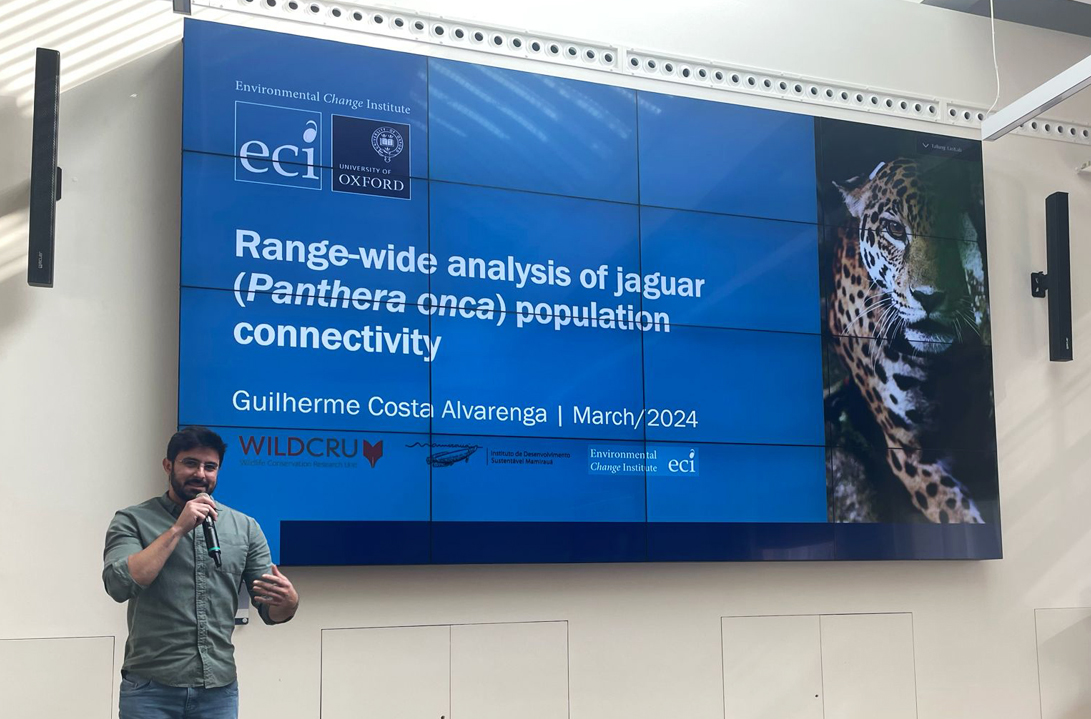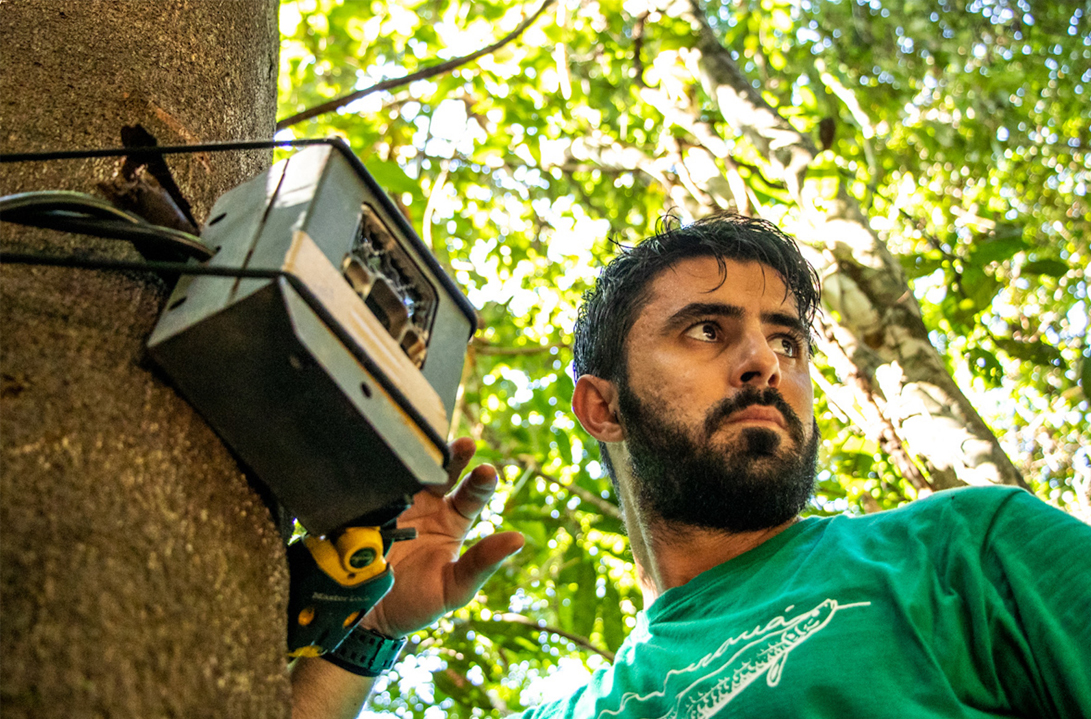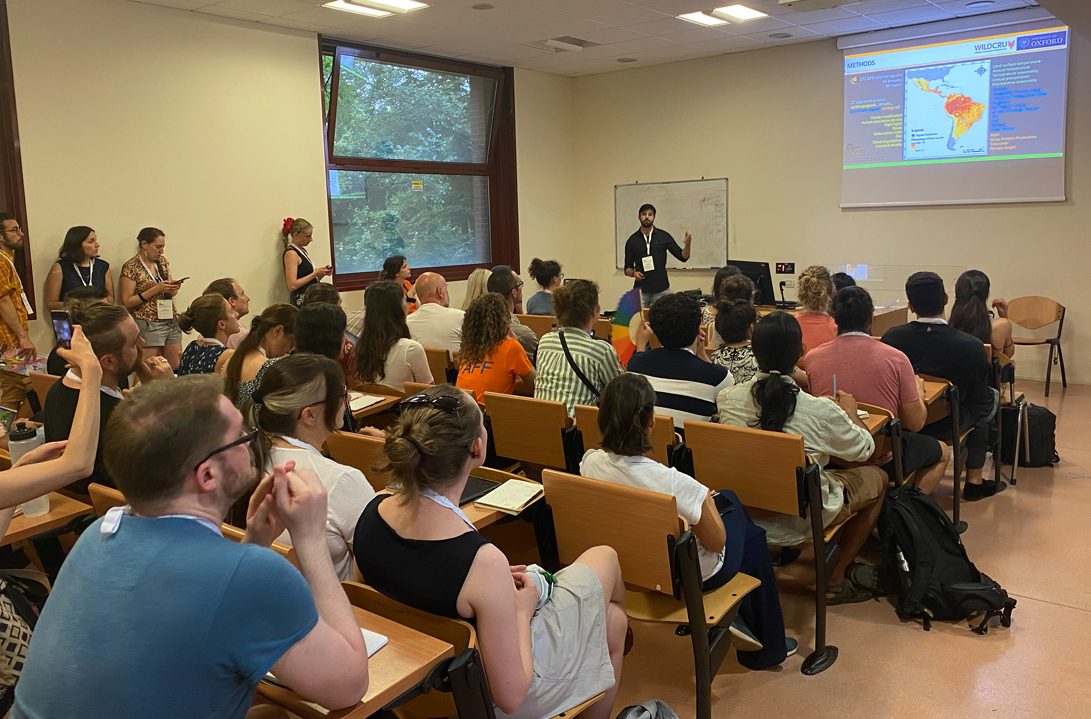Since 2021, the JCI has studied jaguar (Panthera onca) population connectivity across its range. By integrating movement ecology, human-carnivore conflict, and landscape modelling, we aim to reduce human impacts by identifying core habitats, key dispersal corridors, and assessing how future human-induced changes may affect jaguars across the Neotropics.
CONSERVATION CONTEXT
The unparalleled conversion of wilderness into human development has driven the sixth global extinction. Large, wide-ranging carnivores are particularly vulnerable to habitat loss, as they naturally occur at low densities and require extensive areas to maintain viable populations. Jaguars, for instance, have lost around 50% of their range over the past century due to habitat loss and human-carnivore conflict.
Today, most jaguar populations outside the Amazon are small, isolated, and highly vulnerable to extirpation due to limited genetic and demographic exchange – a basic requirement for long-term species persistence. Habitat fragmentation and landscape conversion further restrict movement between subpopulations, increasing inbreeding risks, disease susceptibility, and genetic defects. Additionally, human-carnivore conflict intensifies as human activity expands into previously remote areas.
To mitigate these threats, conservation efforts should focus on protecting core jaguar habitats and maintaining key dispersal corridors to enhance connectivity and facilitate gene flow between populations.



APPROACH
To better understand jaguar population distribution in the Amazon – the species’ largest stronghold – we compiled 40 camera trap datasets from 22 protected areas (PAs) across the biome. This allowed us to produce standardised estimates of jaguar population densities and approximate the total jaguar population within the sampled PAs.
Through a multi-institutional collaboration involving 15 research groups from nine countries and over 50 researchers, we analysed data from an impressive 172 GPS-collared jaguars. With this, we are generating the most up-to-date maps of habitat suitability and connectivity for the species while assessing their conservation implications. Additionally, we will evaluate how future land use changes could impact jaguar population size, habitat extent, connectivity, and genetic diversity.
As part of these efforts, WildCRU and Panthera-Brazil launched the Conecta Project to assess the effectiveness of the Pantanal-Amazon Corridor (PAC) as a functional dispersal route for jaguars and their primary prey. The project also examines local community perceptions and attitudes towards jaguars. If proven effective, the PAC could play a crucial role in connecting two of the world’s most significant jaguar populations – the Amazon and the Pantanal – enhancing genetic flow and long-term species survival.
PROJECT MEMBERS
Guilherme Costa Alvarenga, DPhil student; Dr. Samuel Cushman, Research Fellow; Dr. Caroline Sartor, Postdoctoral Research Associate; Dr. David Macdonald, Research Fellow; Dr. Alexandra Zimmermann, Research Fellow; Dr. Darragh Hare Research Fellow.
PROJECT PARTNERS
This work is conducted in collaboration with the Mamirauá Institute.

